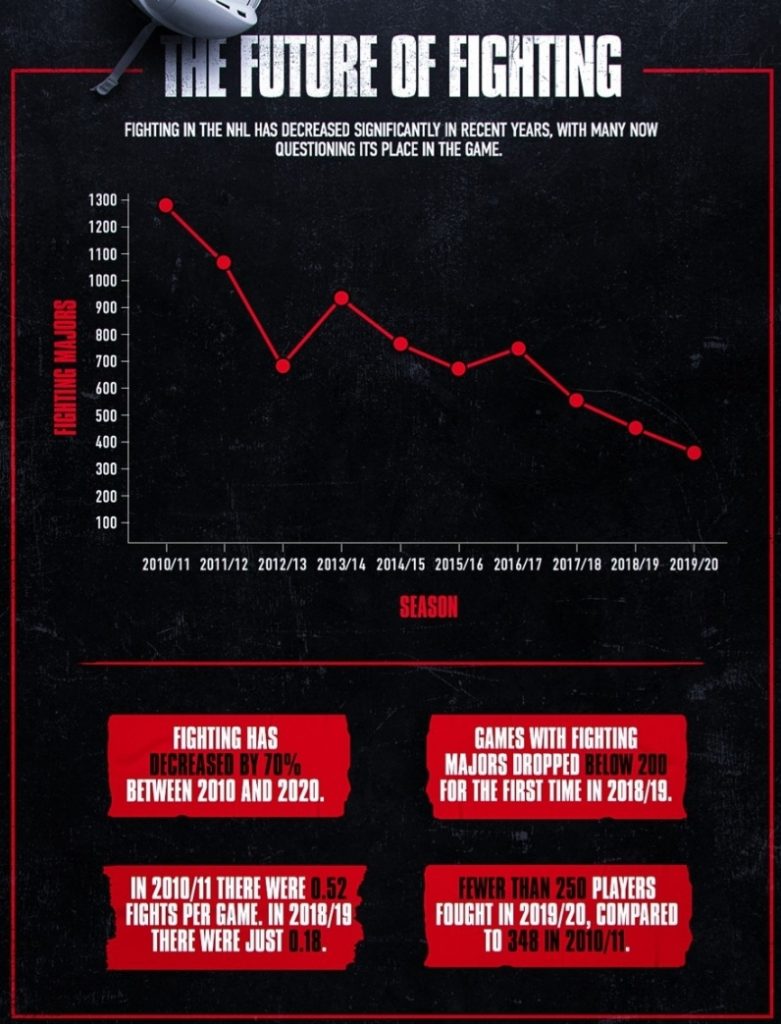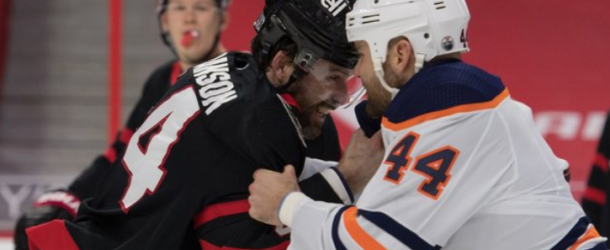WRITTEN BY- Zach Laing
If there’s one thing that has caught the eye of hockey fans since the early days of organized hockey, it’s the fact that players would fight. Over 100 years after its inception, fighting isn’t as prevalent as it once was, but that doesn’t mean is still doesn’t have its place in the league.
The Boston Bruins and Anaheim Ducks have been considered to be among some of the dirtiest teams in recent years, and the fighting numbers back it up. Since the 2010/11 season, the Bruins have been handed 371 fighting majors — the most in that time frame. The Ducks, meanwhile, have 363 fighting majors, the second-highest.
And not far behind them are the Ottawa Senators, who have found themselves handed 323 major’s for fighting since 2010/11. Not only that but the Senators have instigated 18 scraps over that time and spent 8,666 minutes in the penalty box — the third most since 2010/11.
Total fight numbers have steadily declined dipping 70 percent between 2010 and 2020 with less than 250 players scrapping in the latter season, compared to 348 in the former.

Every relevant statistic when it comes to fighting is showing that the numbers are on the decline, so will the NHL get ahead of the curve? It’s hard to say. Junior leagues have stepped up in recent years trying to protect players by adding higher penalties to deter players from fighting, but it’s hard to say if that will ever come to the NHL level.
There’s no denying the risk that comes with fighting, too. All the evidence points towards it having impacts on concussions and we’ve heard countless stories of the toll it takes on players both during and after their careers.
Nonetheless, with the speed of the game ever-increasing “designated fighters” don’t have a place in the game and that, too, has been a big reason why numbers have dipped over the years. Those players, who traditionally weren’t known as being the fastest skaters, no longer have a place in a game where speed is everything. At the same time, the role of a fourth line has evolved over the years. Once used strictly to set the tone physically, more teams are looking to their bottom six forwards for offence.
That speed of the game, however, is one of the reasons why fighting still happens. Hockey is a fast game and it still involves big hits and lots of emotion. That will always lead to a few scraps every now and then.
The Ottawa Senators made a conscious effort to add toughness this off-season but trends across the NHL suggest that for the most part, fighting is gradually being phased out.


